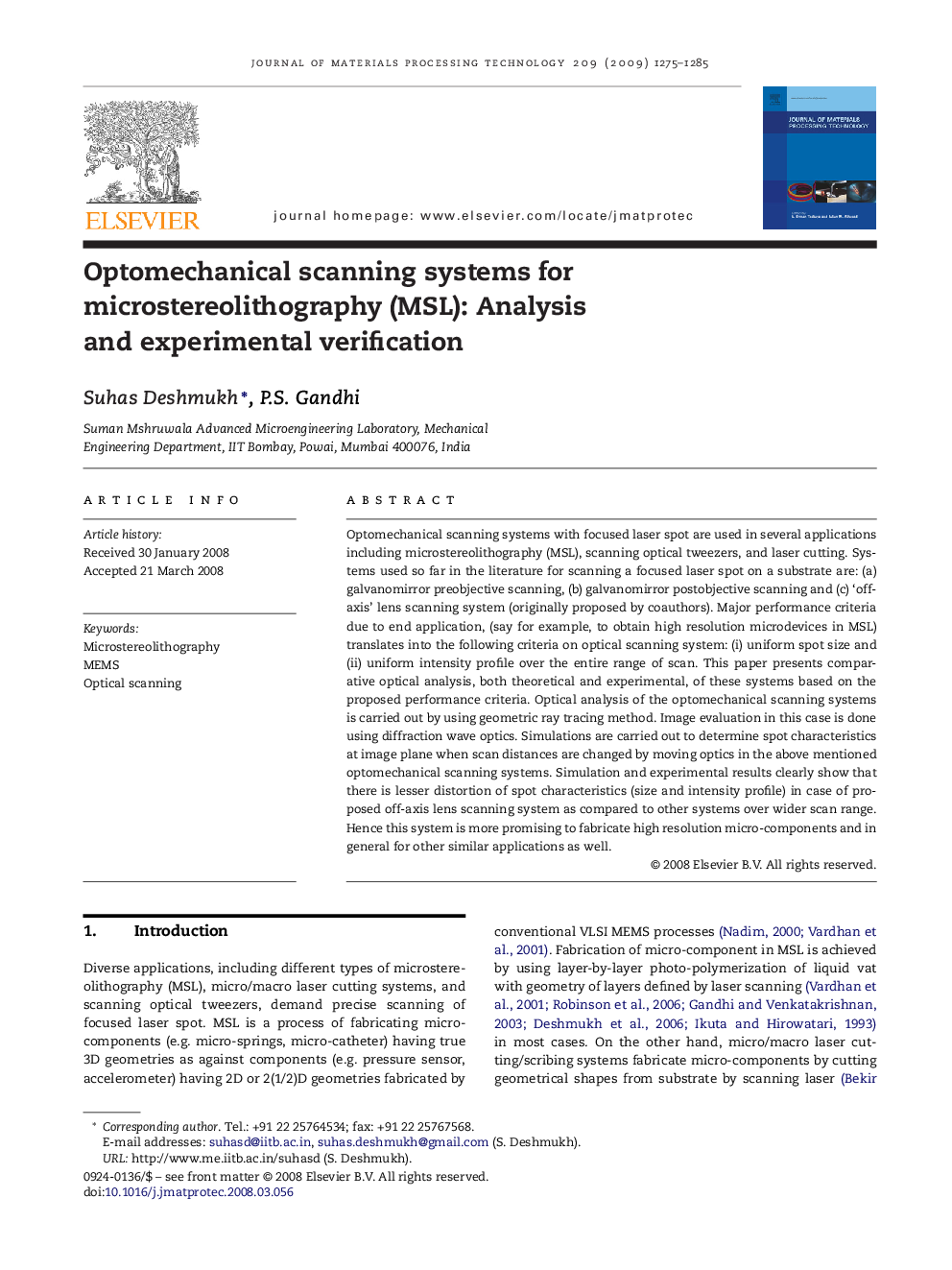| Article ID | Journal | Published Year | Pages | File Type |
|---|---|---|---|---|
| 791504 | Journal of Materials Processing Technology | 2009 | 11 Pages |
Optomechanical scanning systems with focused laser spot are used in several applications including microstereolithography (MSL), scanning optical tweezers, and laser cutting. Systems used so far in the literature for scanning a focused laser spot on a substrate are: (a) galvanomirror preobjective scanning, (b) galvanomirror postobjective scanning and (c) ‘off-axis’ lens scanning system (originally proposed by coauthors). Major performance criteria due to end application, (say for example, to obtain high resolution microdevices in MSL) translates into the following criteria on optical scanning system: (i) uniform spot size and (ii) uniform intensity profile over the entire range of scan. This paper presents comparative optical analysis, both theoretical and experimental, of these systems based on the proposed performance criteria. Optical analysis of the optomechanical scanning systems is carried out by using geometric ray tracing method. Image evaluation in this case is done using diffraction wave optics. Simulations are carried out to determine spot characteristics at image plane when scan distances are changed by moving optics in the above mentioned optomechanical scanning systems. Simulation and experimental results clearly show that there is lesser distortion of spot characteristics (size and intensity profile) in case of proposed off-axis lens scanning system as compared to other systems over wider scan range. Hence this system is more promising to fabricate high resolution micro-components and in general for other similar applications as well.
